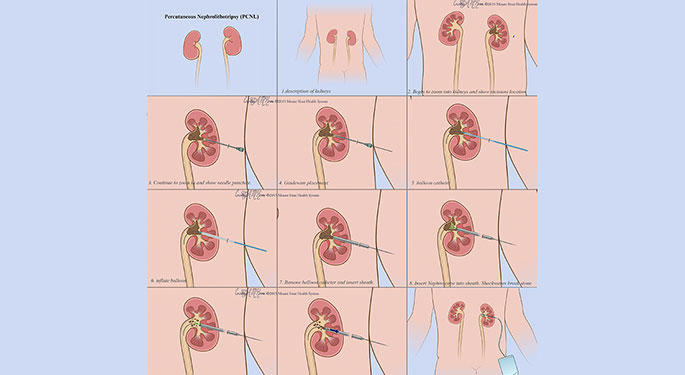Treatment
Patients with kidney stones have a number of treatment options available to them. We develop individualized treatment plans, depending on the size and type of the stone, its cause, your health profile, and whether you have just one stone or whether the problem is recurring. We employ a nutritional, holistic, and preventive approach to the management of kidney stone disease.
Some stones are so small that we can allow them to pass naturally by urination. We then collect the stone so we can examine it and determine the cause. We use this information to develop an approach to preventing future kidney stones.
Medications
We use medications such as a thiazide diuretic or a phosphate-containing preparation to help prevent calcium stones from forming. For uric acid stones, we may prescribe medicine to make your urine more alkaline.
Minimally Invasive Procedures: Lithotripsy
Lithotripsy crushes the kidney stone into particles that you can pass through urine. This minimally invasive approach uses a high-energy shock wave generated by a high-voltage energy source that fragments the stone. We use two types of lithotripsy procedures.
Extracorporeal Shock Wave Lithotripsy (ESWL) works best on small stones. This noninvasive outpatient treatment uses a high voltage device that generates high-energy shock waves that enter the body through the skin surface without an incision. We focus these shock waves onto the stone which fragments into particles so it can pass through the urine.
Minimally Invasive Technique: Ureteroscopic Laser Lithotripsy
Ureteroscopic laser lithotripsy is a minimally invasive outpatient surgical technique for larger stones that cannot be broken up by ESWL. With this approach, we send a small endoscopic camera through the urethra and urinary bladder into the ureter and/or kidney, then use a Holmium:YAG laser to fragment the stone into particles. We can extract these bits from your body so you do not have to pass them. We have found that this approach is particularly effective for large stones (more than 1cm) that are located in the upper part of the ureter. The procedure is also effective for morbidly obese patients.
Minimally Invasive Technique: Percutaneous Nephrolithotomy
Percutaneous nephrolithotomy (PCNL) is a minimally invasive technique designed to remove multiple or large kidney stones. This procedure requires specialized training and skills and can achieve complete stone removal in a single session through a small sheath that is placed into the kidney from the side, instead of going through the urethra. A camera is inserted through the sheath and the stones are fragmented and removed. Dr. Gupta has created his own procedure called modified PCNL, which achieves the same outcome as regular PCNL, but with a miniaturized incision that is so small it is sutureless, i.e. requires no stitches. He has also pioneered mini-PCNL and tubeless PCNL. These techniques allow removal of stones as small as 1 cm to stones over 10 cm with a very short or no hospital stay, and minimal morbidity.


